Qalaat Sheizar قلعة شيزر
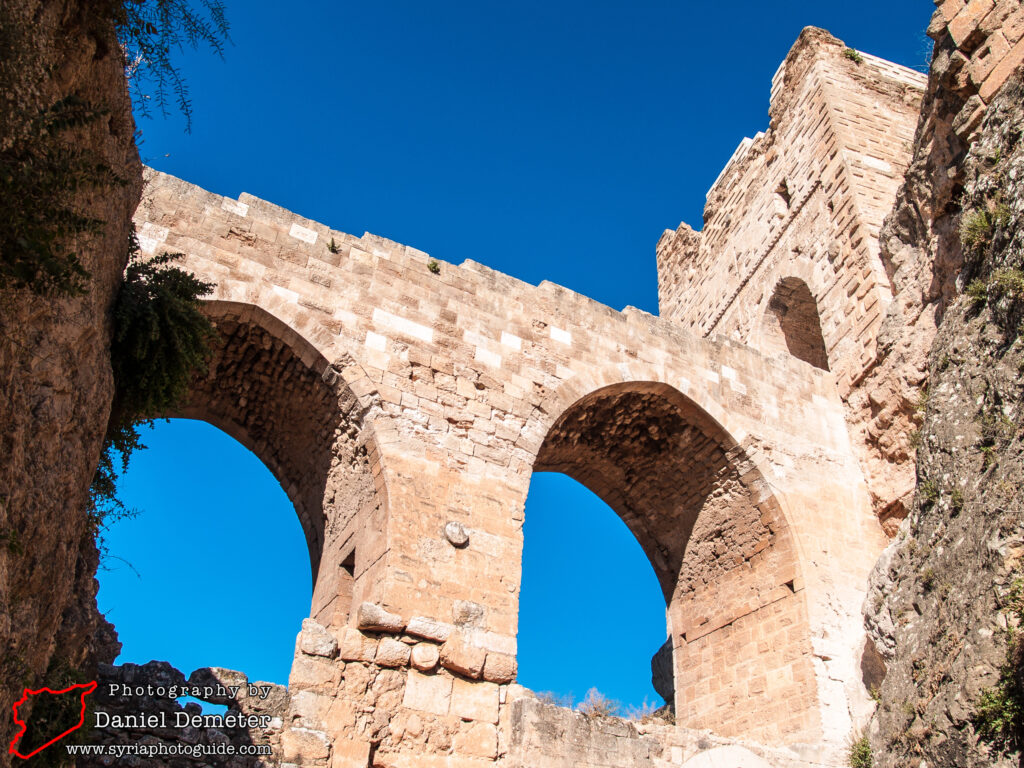
Qalaat Sheizar (قلعة شيزر) is an impressive Arab castle located to the north of Hama (حماة) overlooking a vital river crossing point on the Orontes. Here the river, after rushing around a bend through a confined gorge to the east, returns to the more leisurely pace of the plains. The settlement apparently has classical origins, with local legends recorded by Diodorus Siculus (first century BC) claiming its foundation by a regiment of Thessalonian cavalry from Alexander’s forces.
In the early Arab period, a Fatimid castle stood on the site but was seized in 999 by the Byzantines in their effort to reassert their control in Syria against the Fatimids. As the Byzantine hold weakened, a local clan (the Banu Munqidh) seized Qalaat Sheizar (قلعة شيزر) in 1081. By the time the Crusaders had installed themselves briefly in Qalaat al-Madiq (قلعة المضيق) to the north, the clansmen used Qalaat Sheizar (قلعة شيزر) as a base to harass their presence. It formed a strongpoint of the Arab frontline against the Crusaders.
Qalaat Sheizar (قلعة شيزر) grew in importance as a center of Arab resistance, so much so that the Crusaders set up positions in the mountains on the opposite side of the plain to observe and contain Qalaat Sheizar (قلعة شيزر). These included Qalaat Abu Qubeis (قلعة آبو قبيس) and Qalaat al-Mahalbeh (قلعة المهالبة). Tancred unsuccessfully sought to take it in 1108, and after another feint in 1110 was forced to settle for a treaty with the Emir of Sheizar agreeing to live and let live within existing spheres of influence.
The Byzantines attempted in 1134 and 1138 to take the castle, but also failed. Much of it was destroyed in 1157 by the severe earthquake which affected the greater part of Syria. The Crusaders tried to profit from the decimation of the clan owners in the destruction by moving on Qalaat Sheizar (قلعة شيزر), occupying the lower citadel. But by then Nur al-Din was active in northern Syria. He expelled them, repaired the damage and installed his own governor.
In 1170 another earthquake did further damage. Salah al-Din’s incorporation of northern Syria after 1174 brought it under his control. A new keep was constructed under the Ayyubids (1233). The first Mongol invasion of Syria in 1260 brought renewed destruction but Baibars (1260-1277), who did much to revive Syria after the Mongol wave had passed, garrisoned it. He and his successor, Qalaun, were probably responsible for a good deal of the castle as seen today (especially the northern defenses and the reconstruction of the keep). The castle subsequently fell into disuse as a military post but came to shelter the village inhabitants whose building activities helped erode its fabric until they were moved out in recent decades.
The elongated (300 meter) crag on which it sits provides a natural setting for a fortress. As you pass the modern village, take a close look on the right at the south end of the crag where a great ditch has been drug out of the living rock to isolate the defenses from the connecting hill and give the main castle keep greater elevation. Similar arrangements were employed at Qalaat Salah al-Din (قلعة صلاح الدين) and Qalaat al-Shaghur/Bakas (قلعة الشغور/بكاس).
A visit to the castle requires only an hour or so, and is a convenient stop on the way between Hama (حماة) and Apamea/Afamia (آفاميا). The castle is entered from the north, near the old Turkish bridge and norias. The bridge which gives entry is not medieval. It leads into a salient of the castle built in 1290 (according to the Arabic inscription above the rear arch of the vestibule) which juts out from the northern walls at an angle and was originally skirted by a glacis. The salient’s construction is solid with large bossaged blocks anchored through the use of classical columns. The upper tower is partly missing but one story and several windows survive.
A vaulted passage takes you through to a relatively open space, the jumbled remains of various epoques left after the villagers were evacuated. There is not much that is identifiable, but the views west over the plain or east over the Orontes gorge 50 meters below are worth taking in. Head straight for the south end of the ridge, towards the prominent remains of the keep or donjon already noted, towering above the artificial ditch. Poised at the weakest point of the castle’s defenses, this was originally built in 1233 by the Ayyubids using large bossaged blocks and strengthening columns. The quality of work is superior to the entrance gateway. There is an entrance on the north but access is difficult. Inside, the tower comprises a cellar area with vaulted rooms, two large floors and a roof platform. The architecture and siting of the keep has much in common with Crusader techniques, though the proportions are not always regular, especially in the pillars holding up the vaulting.
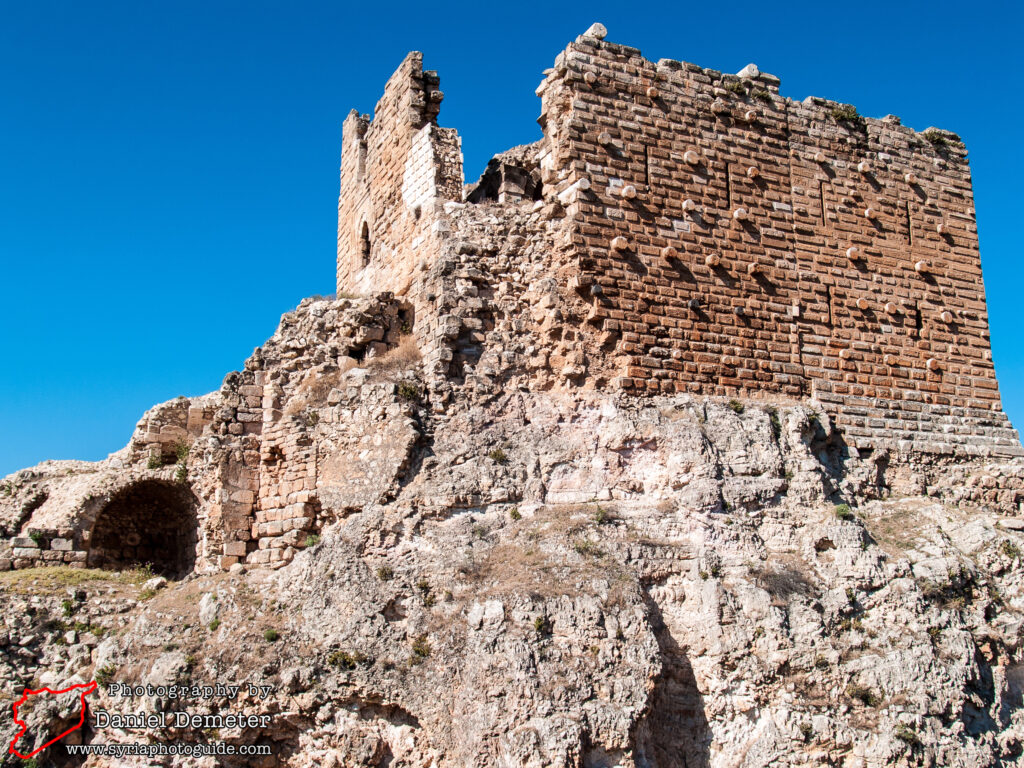
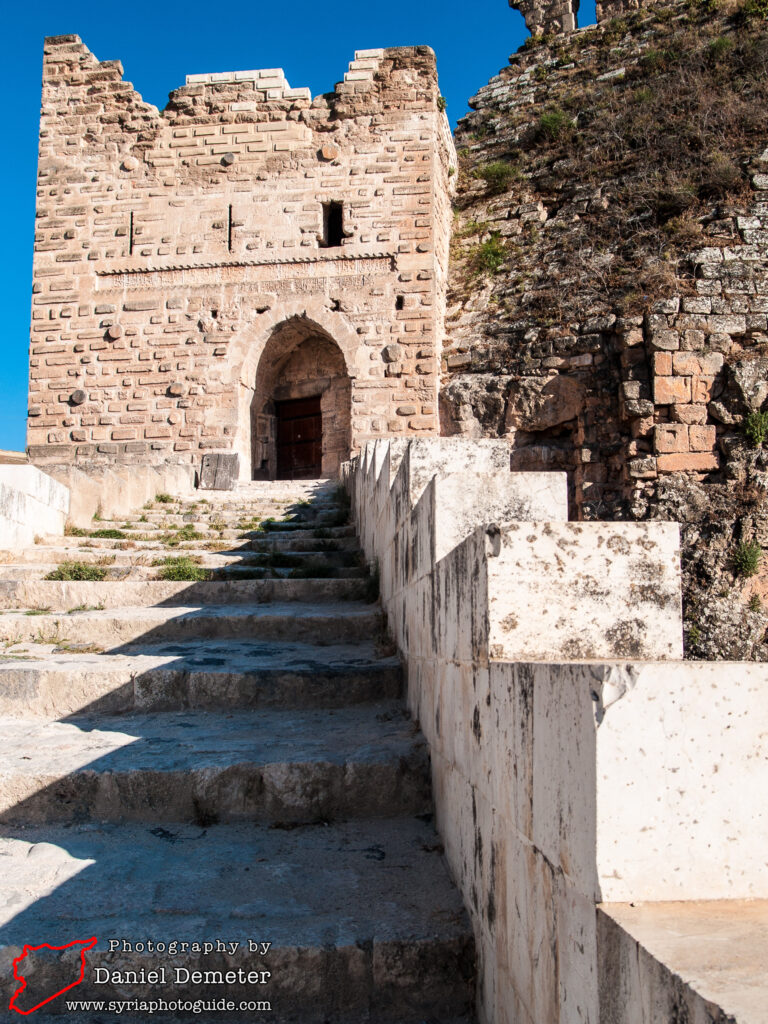
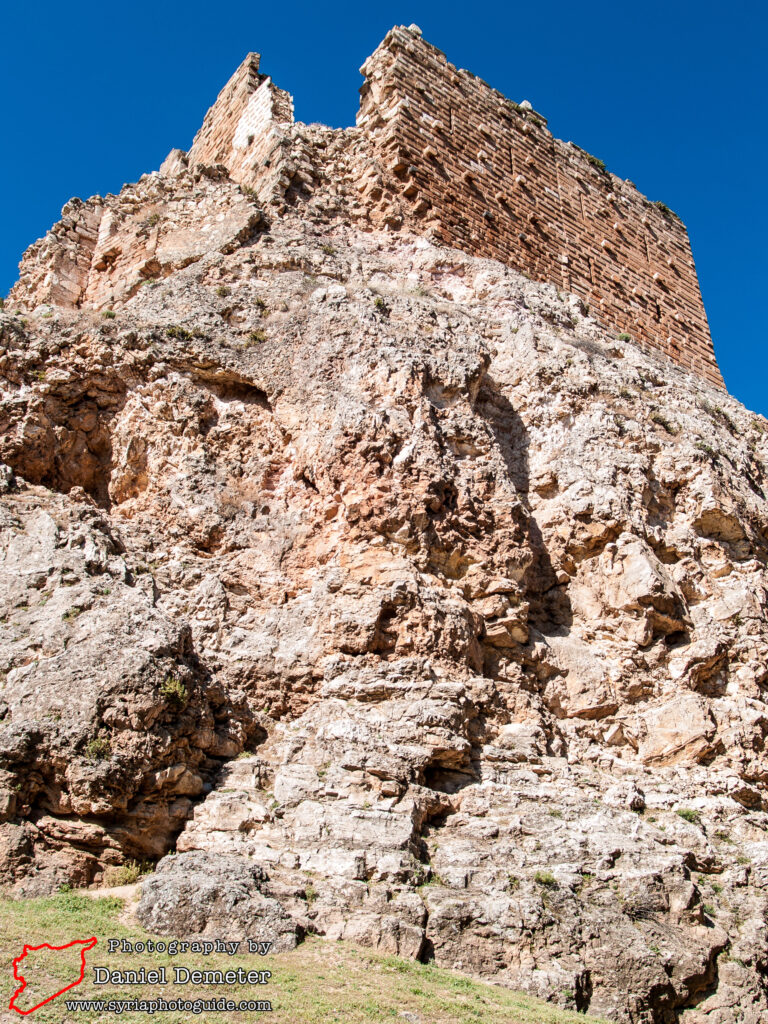
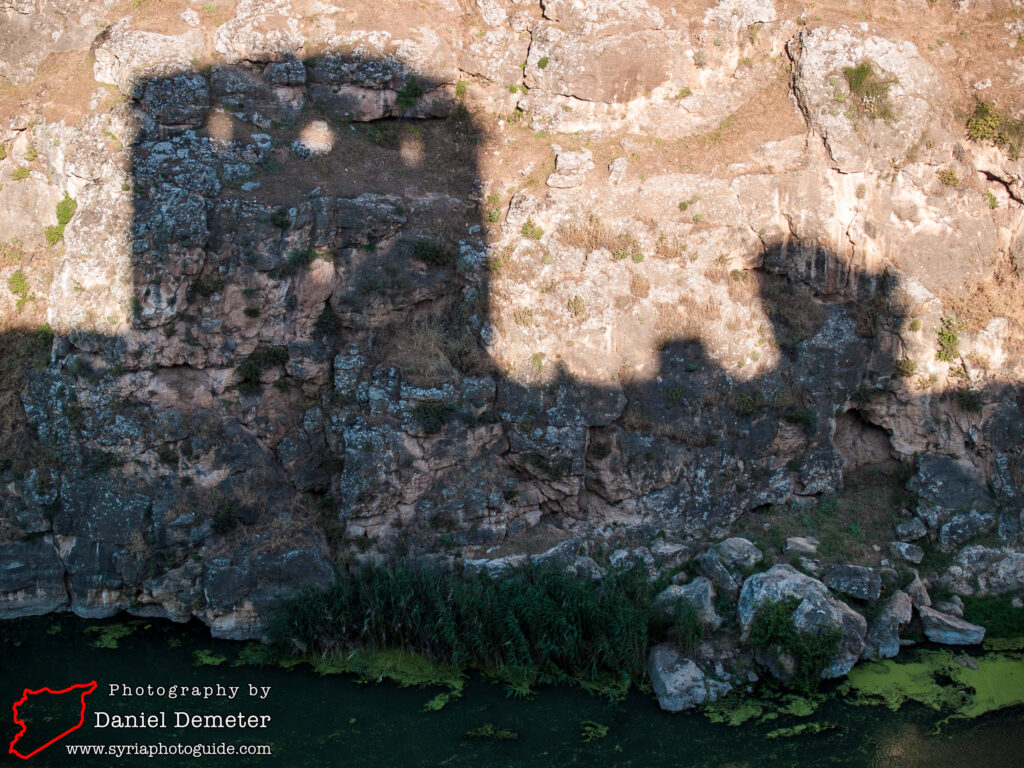
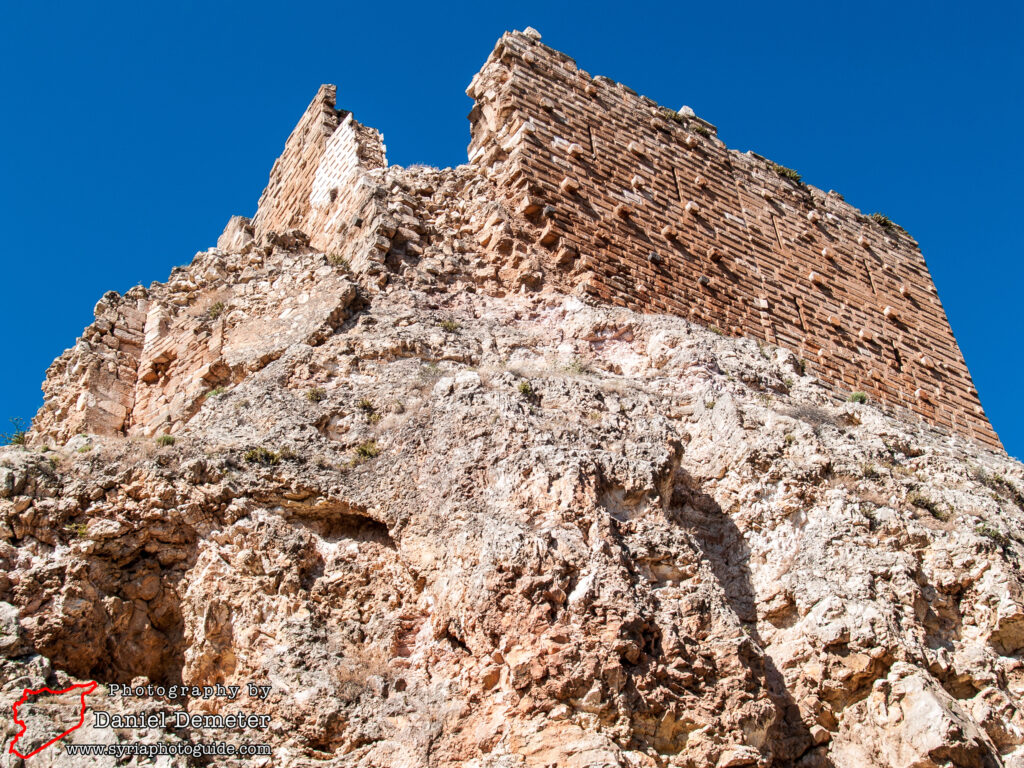
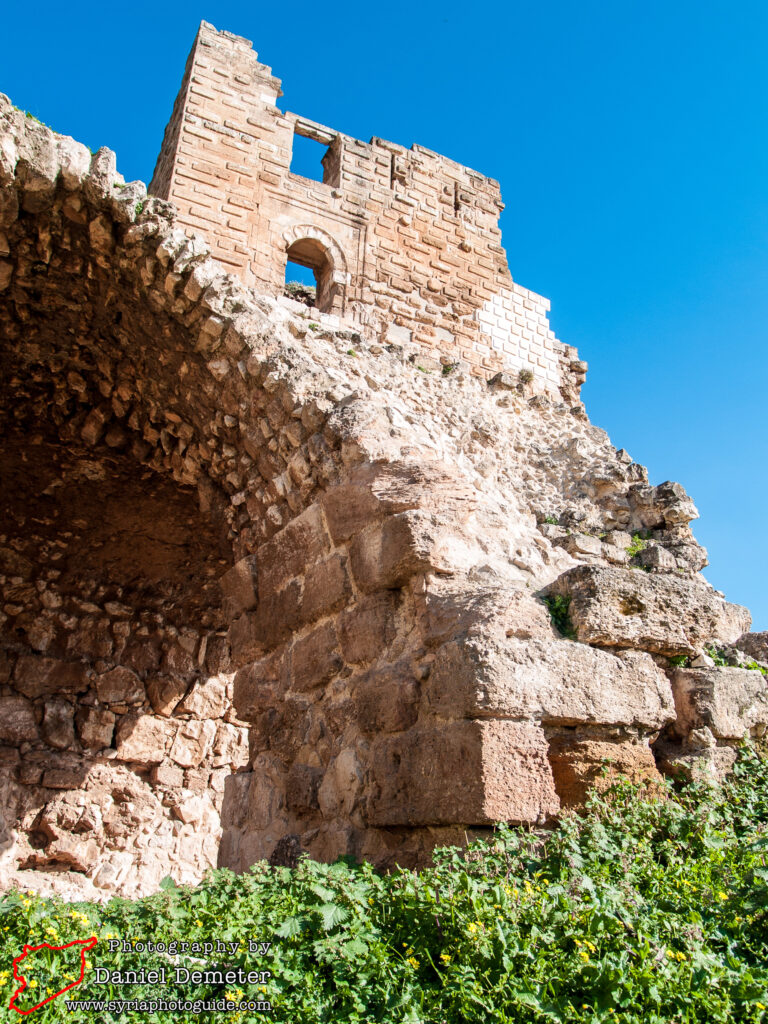
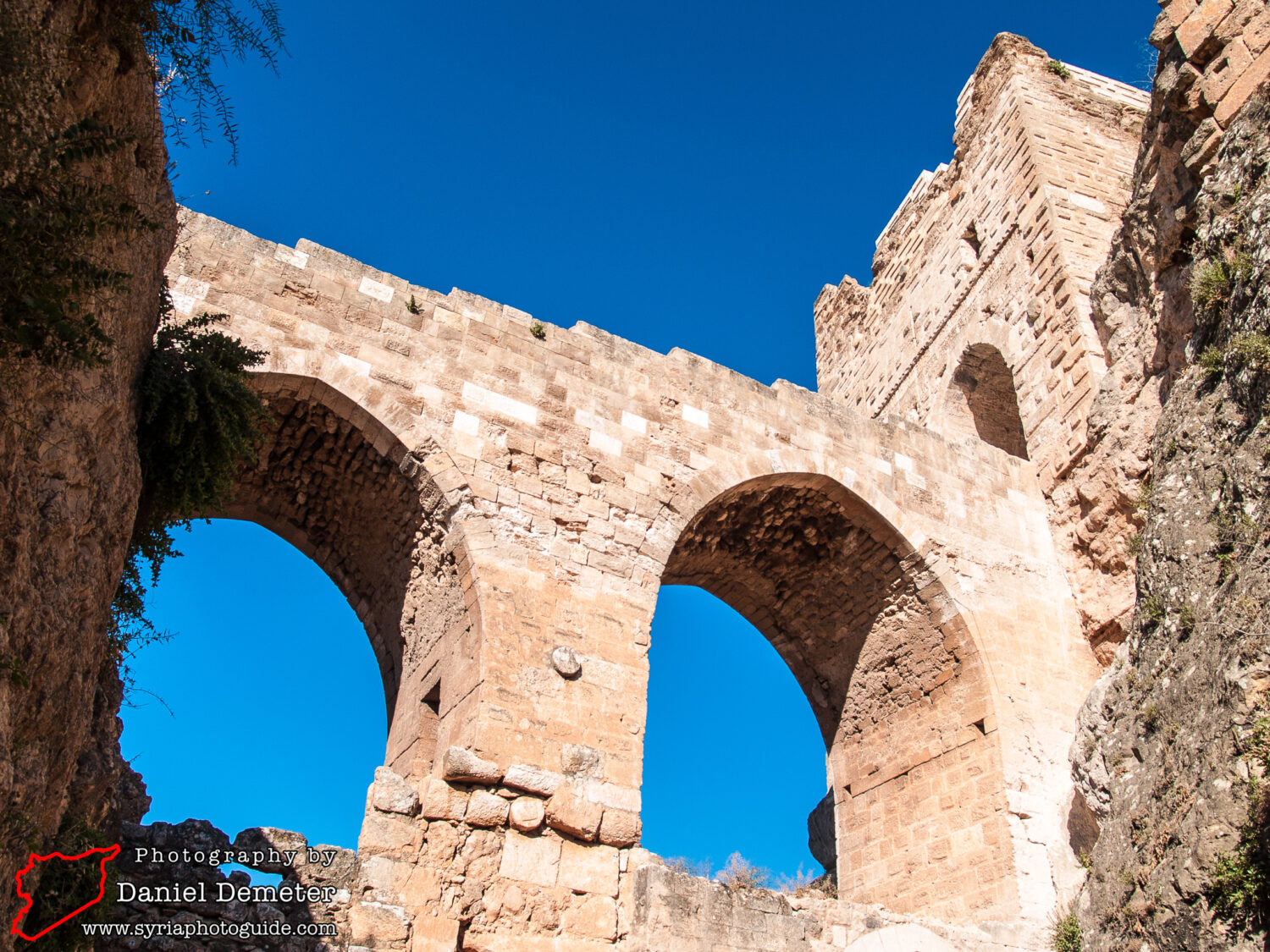
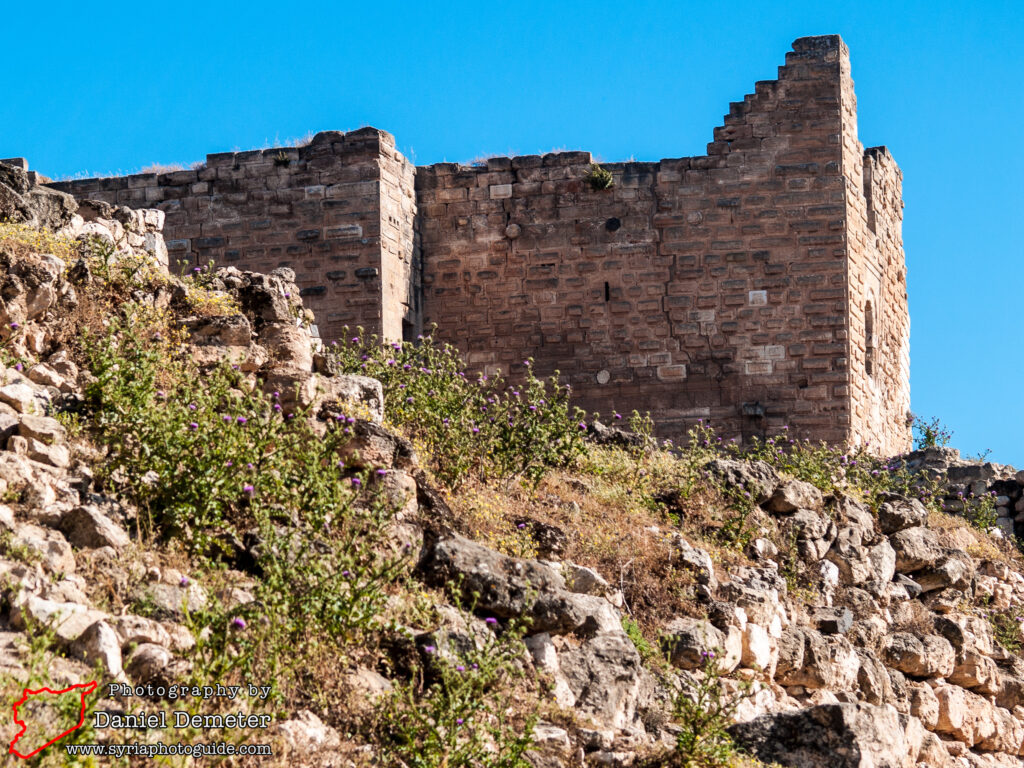
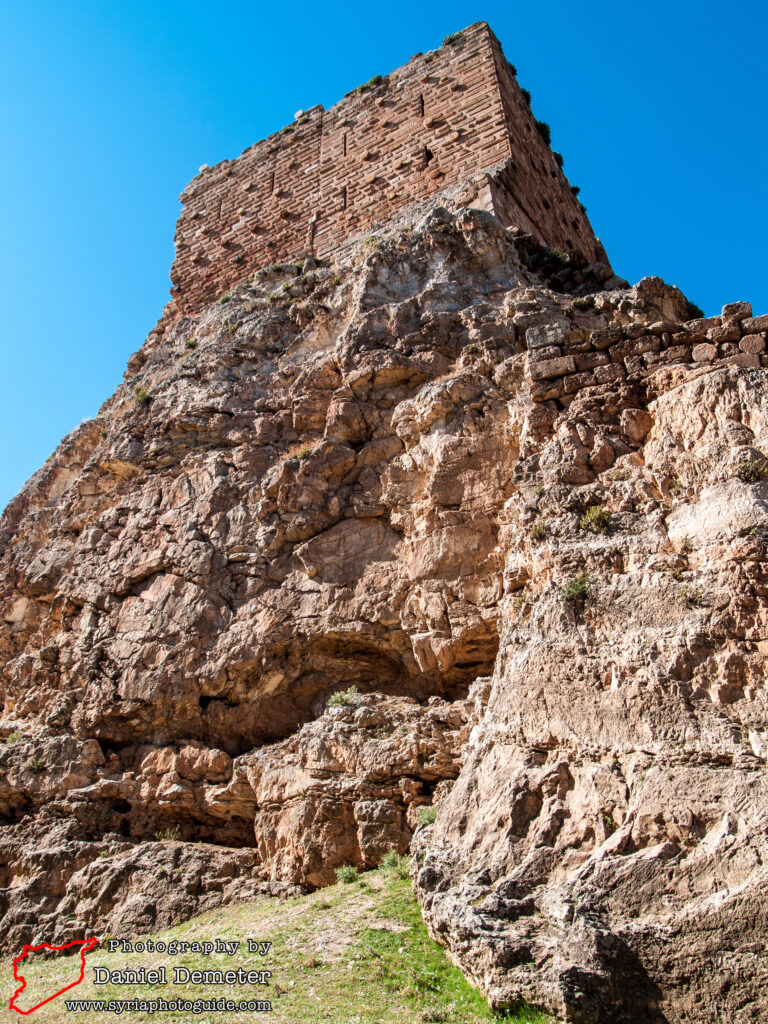
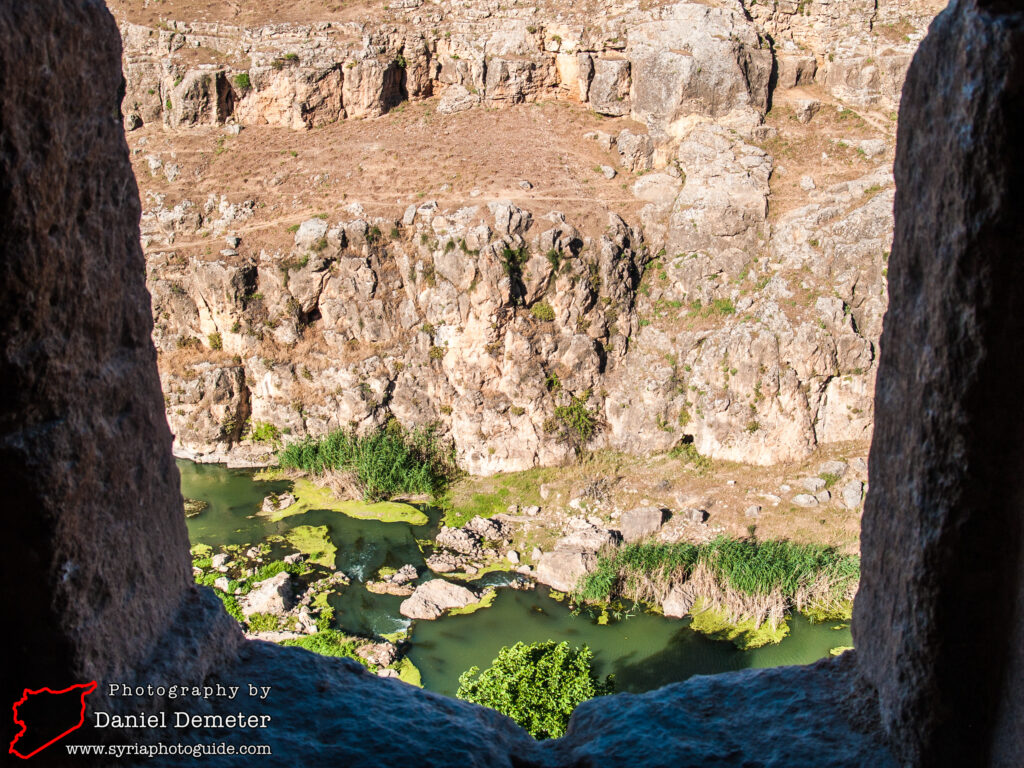
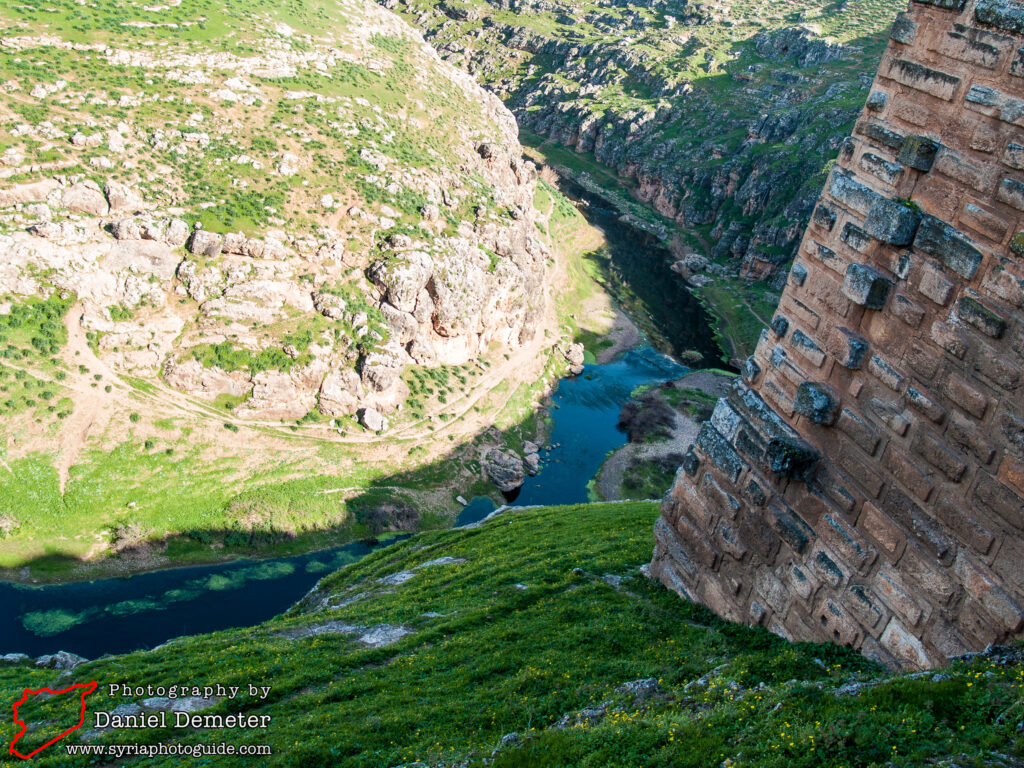

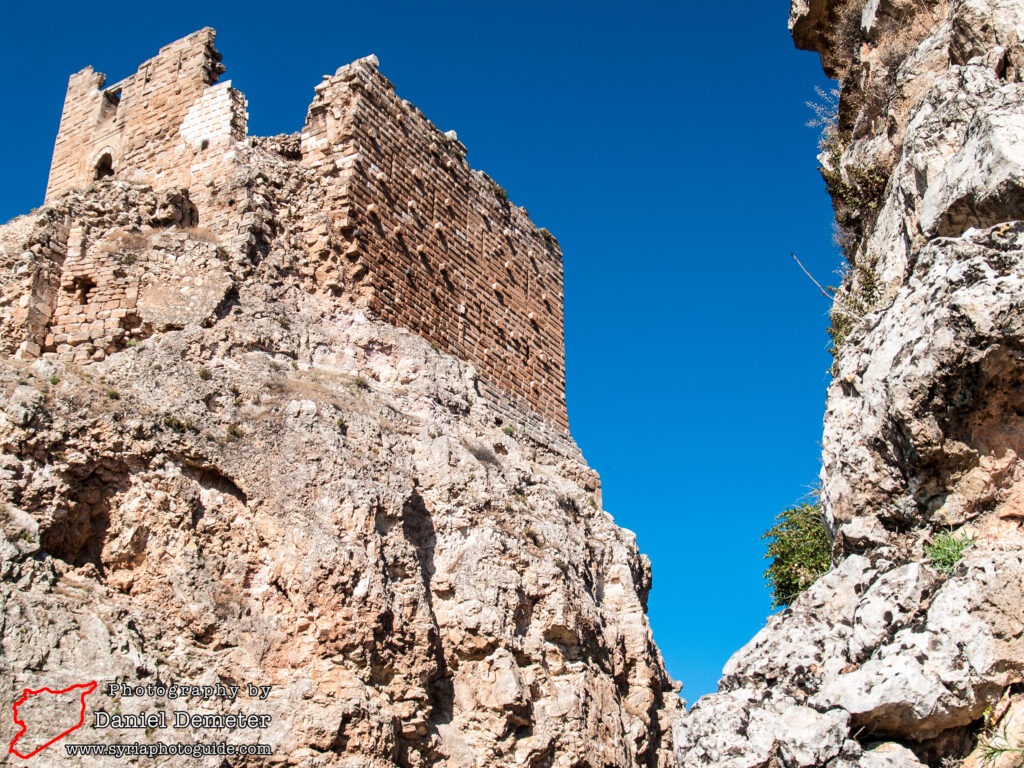
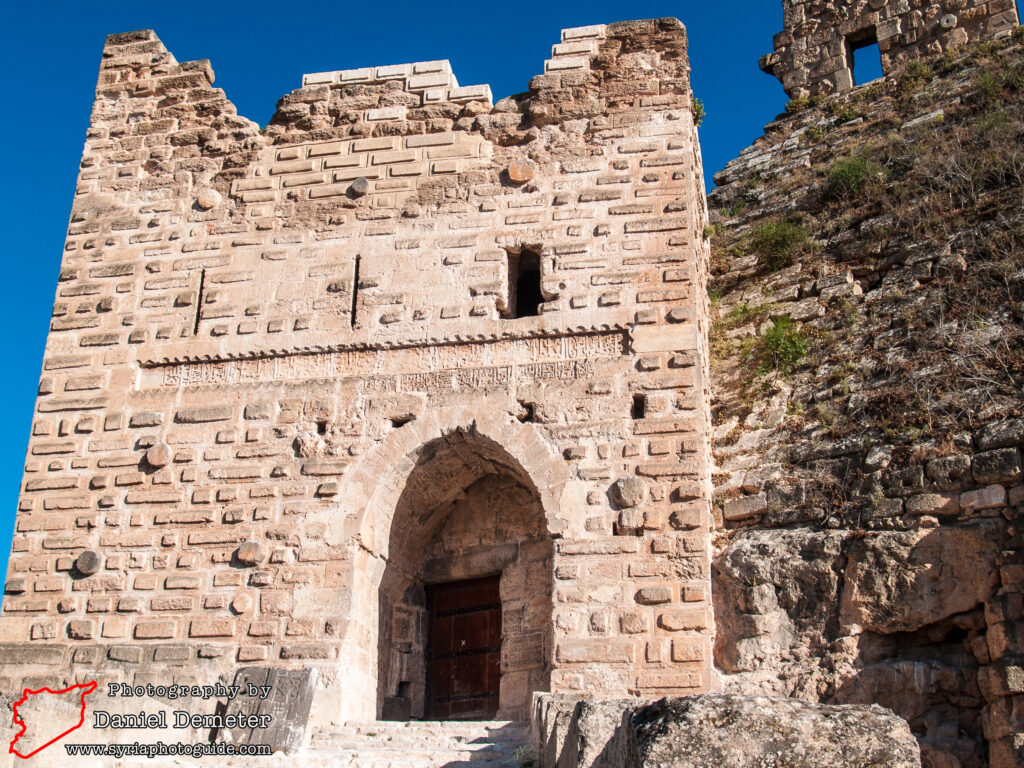
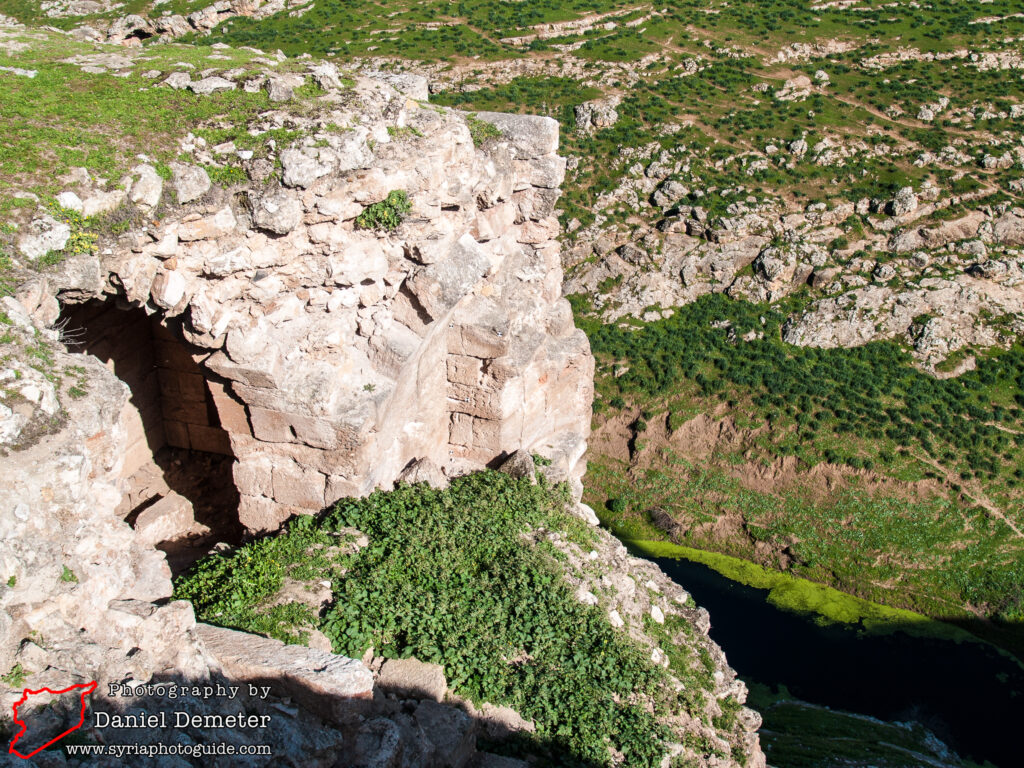
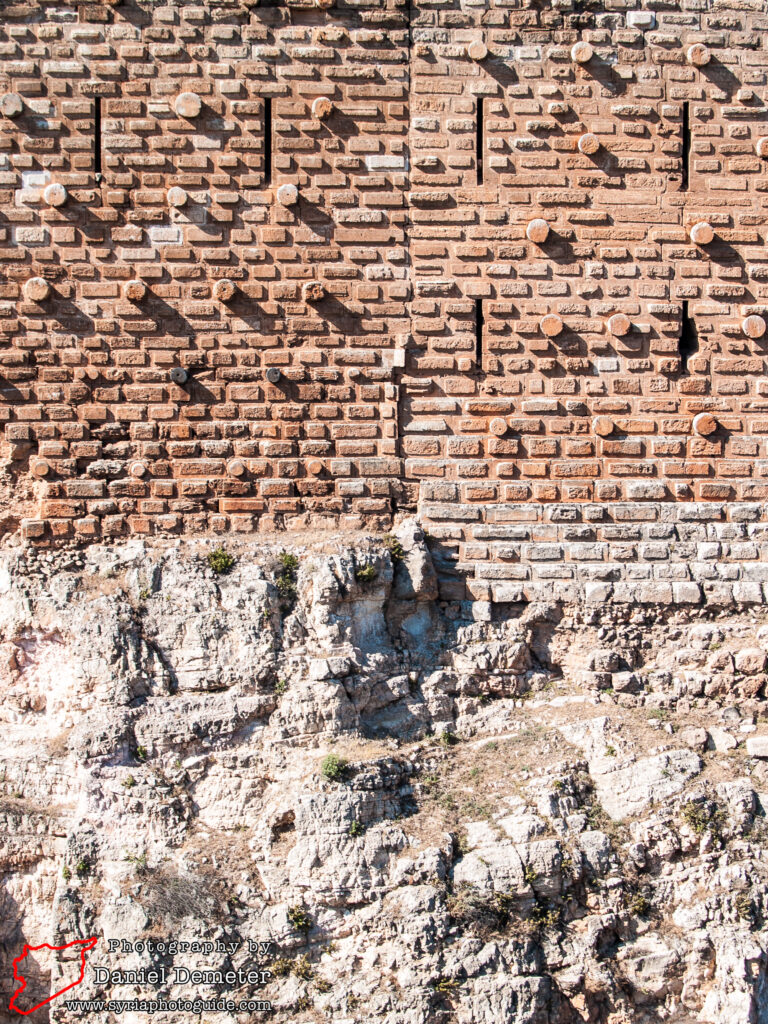
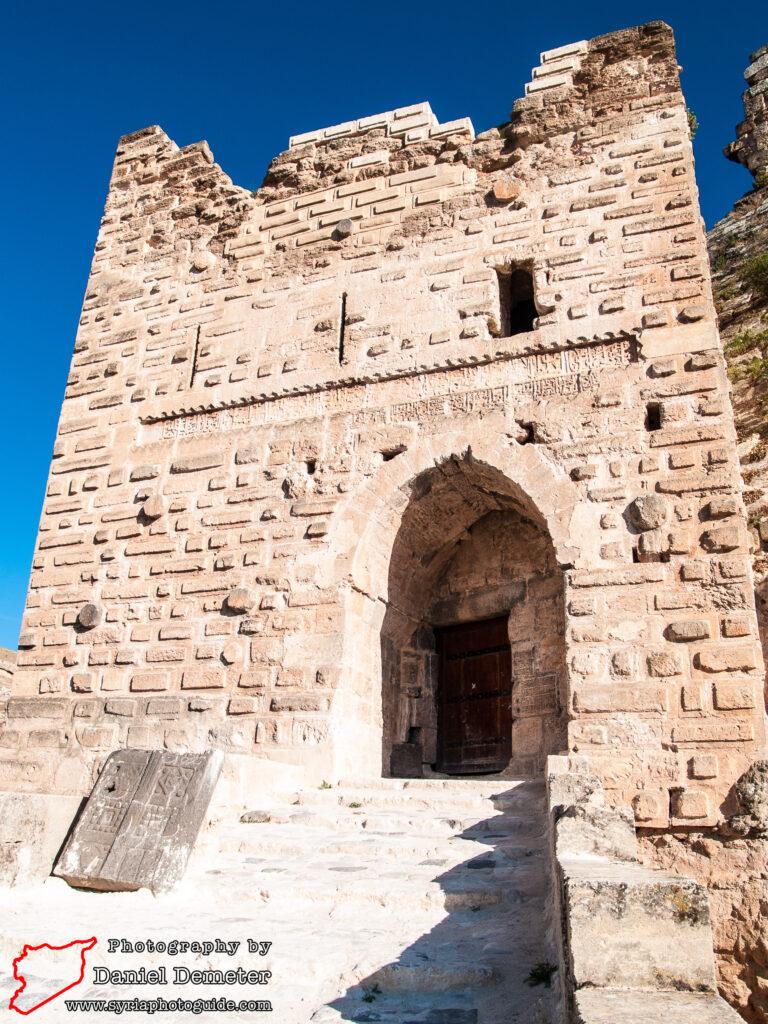
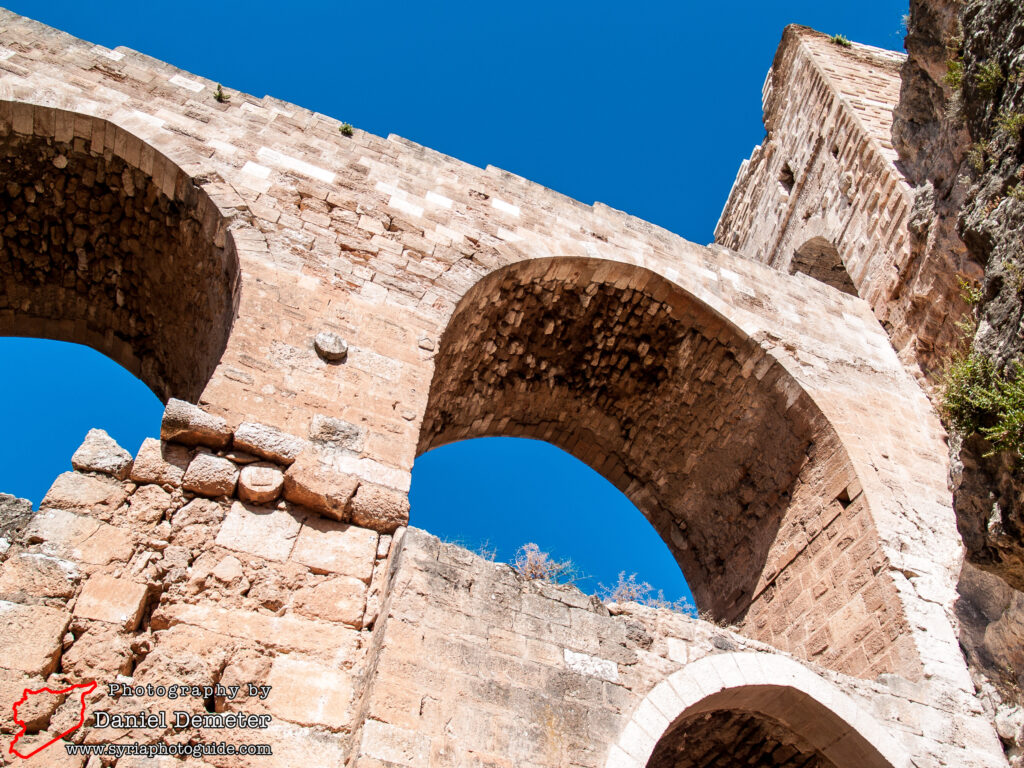
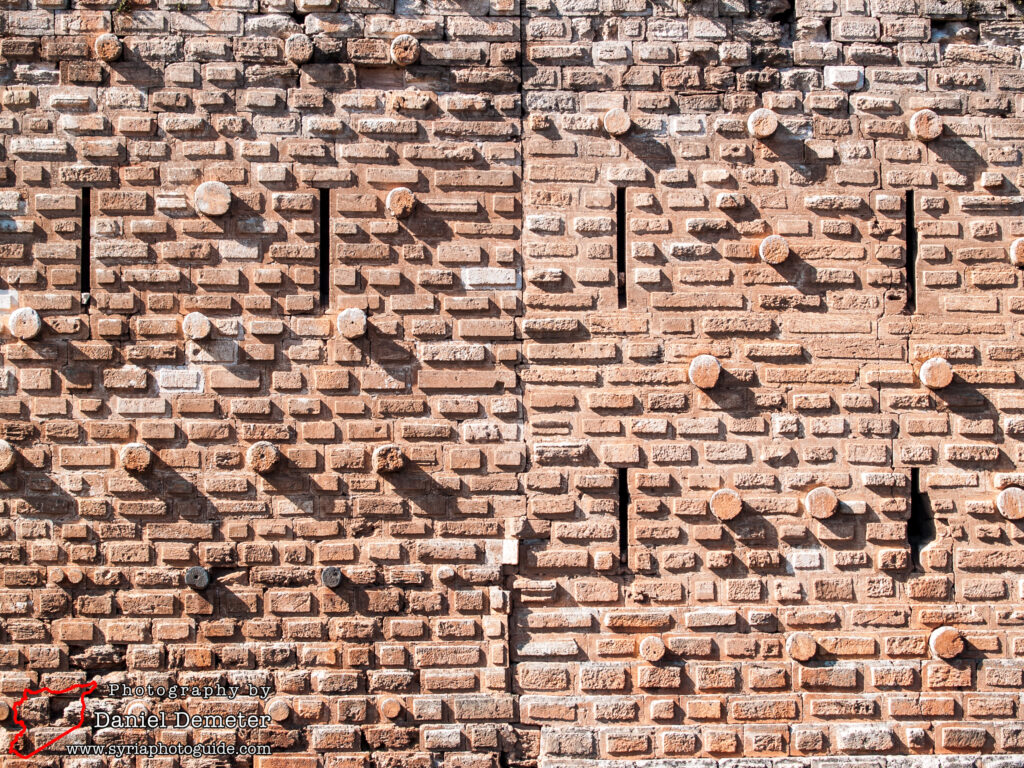
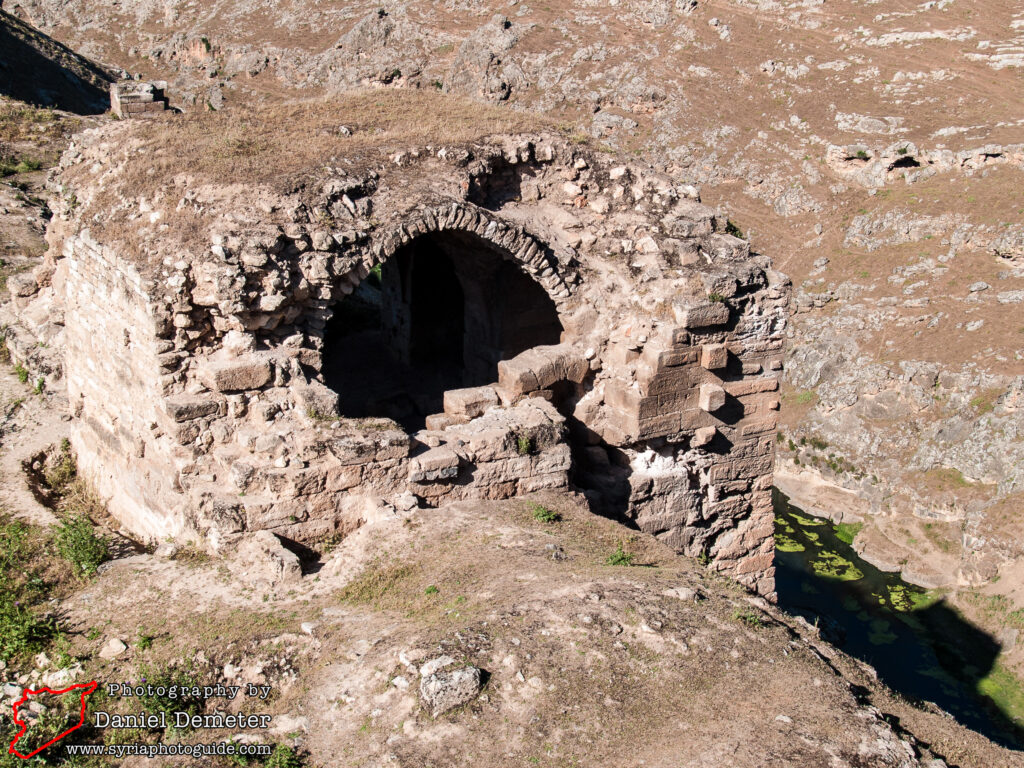
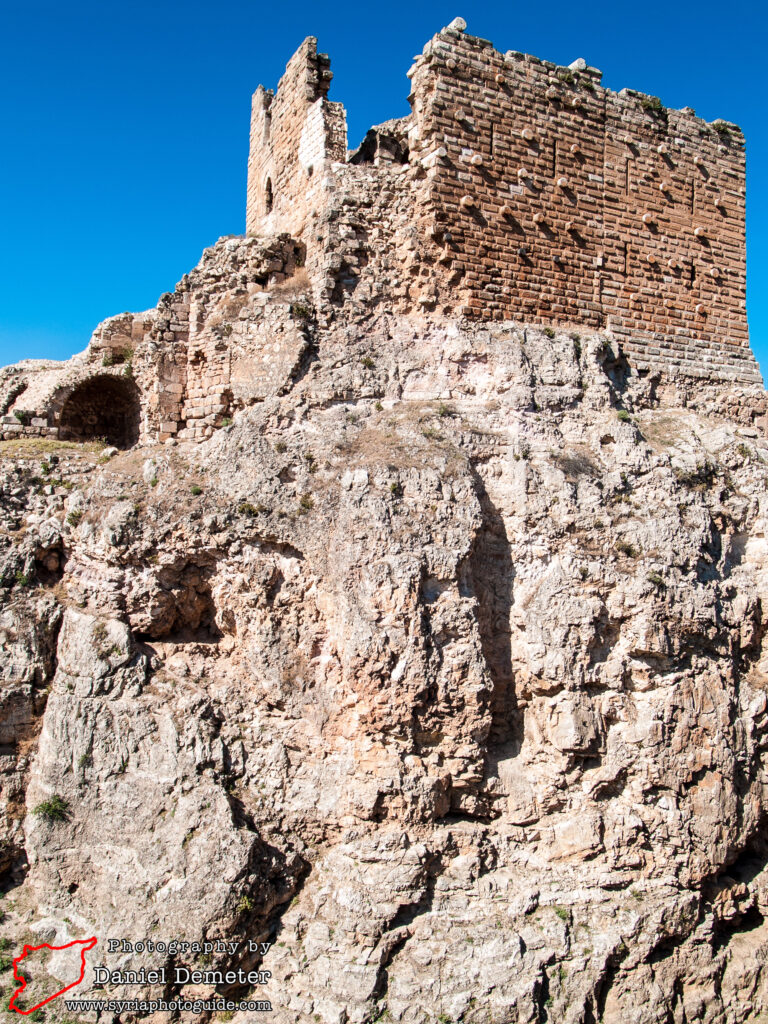
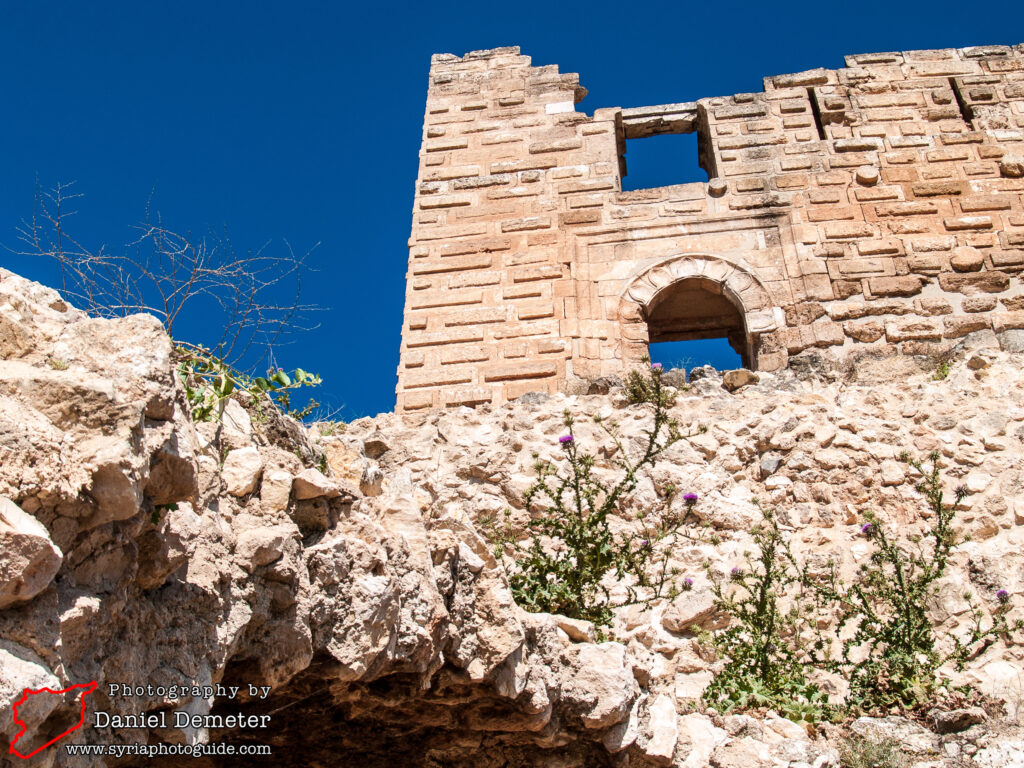
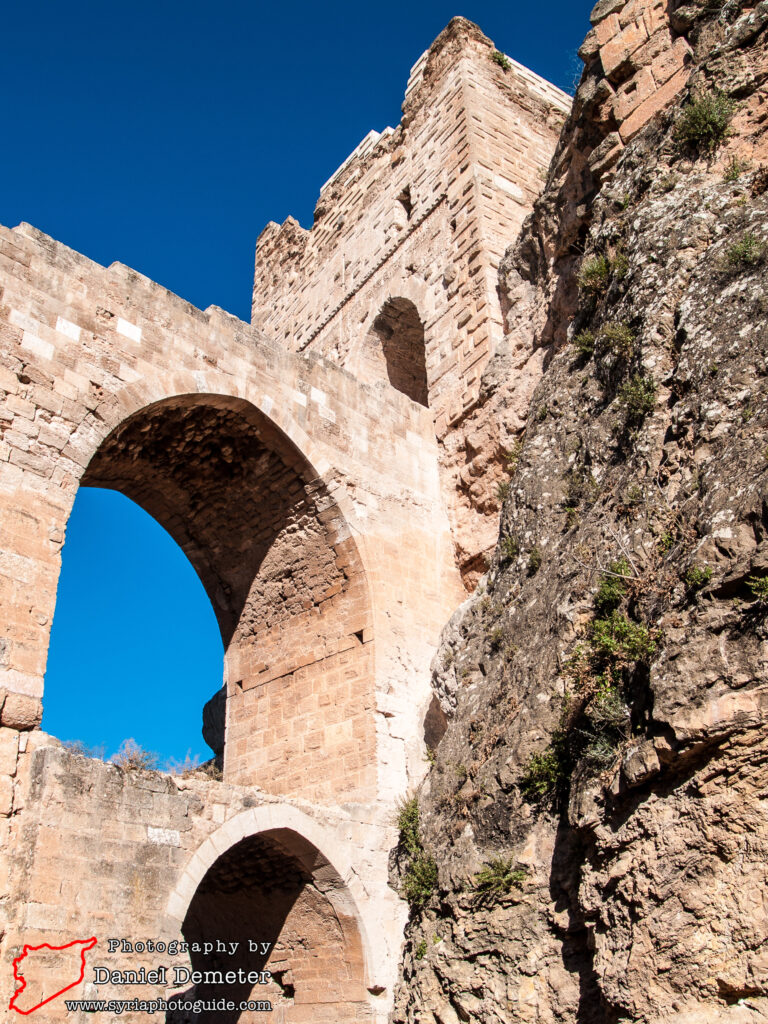
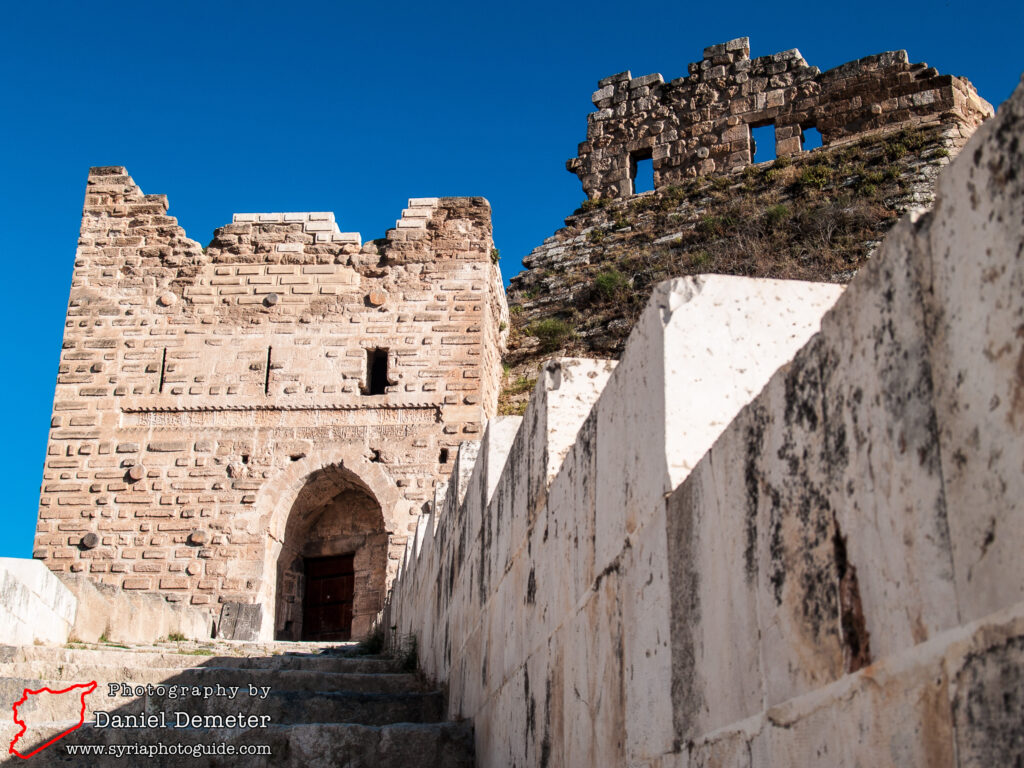
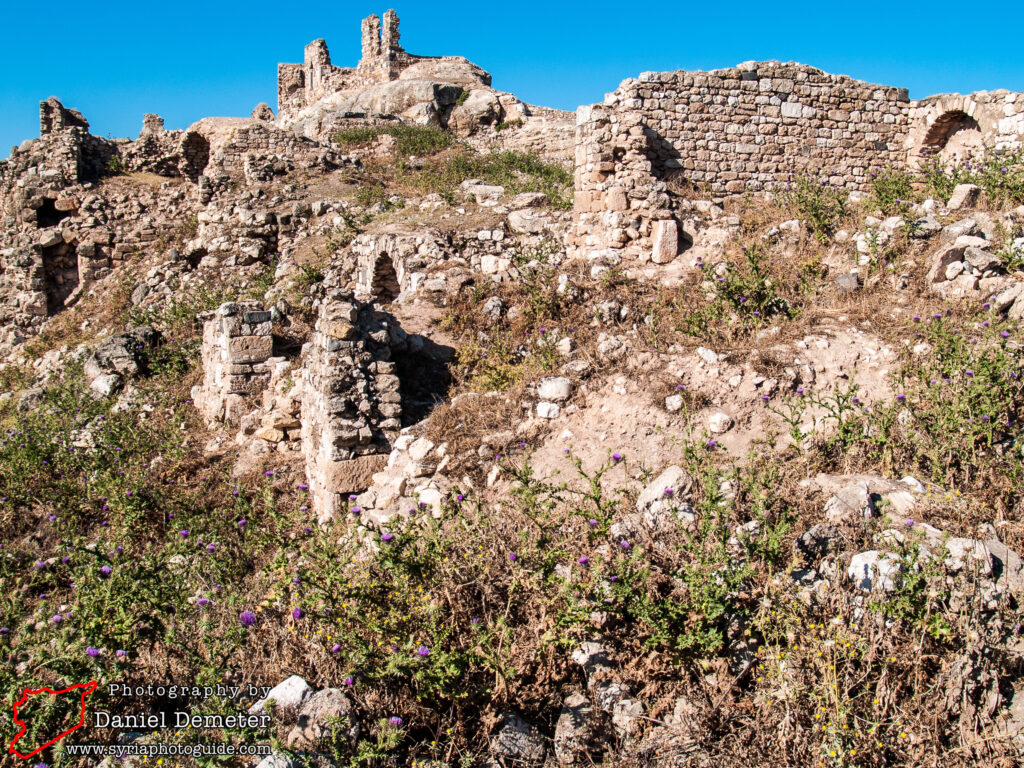
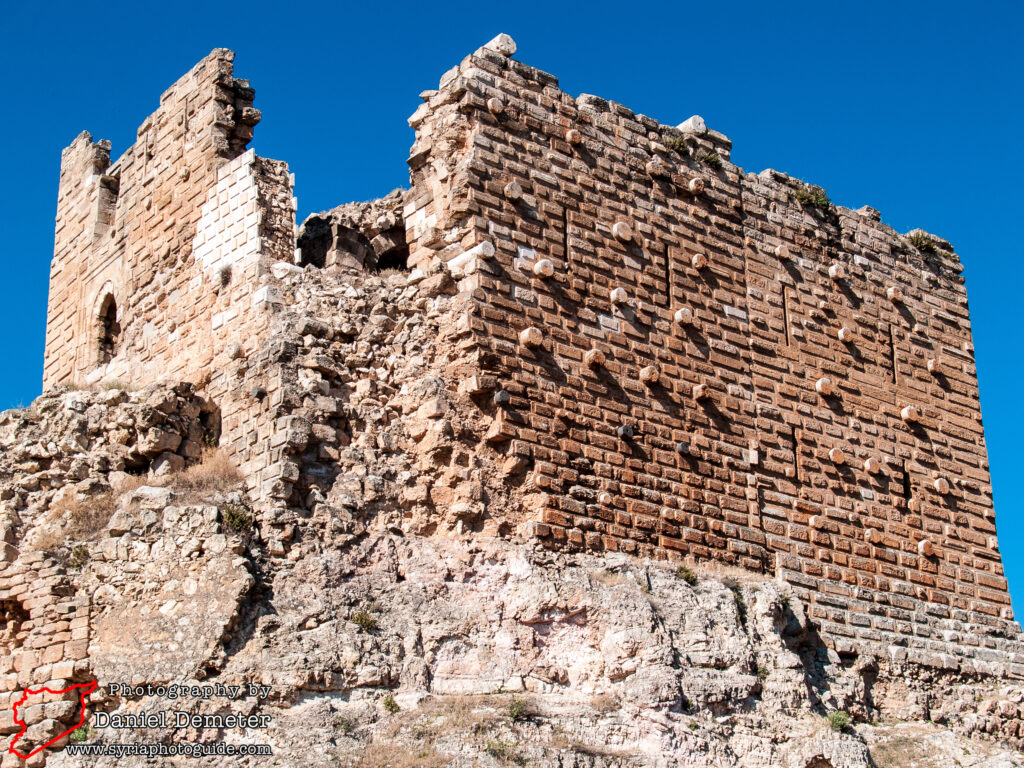
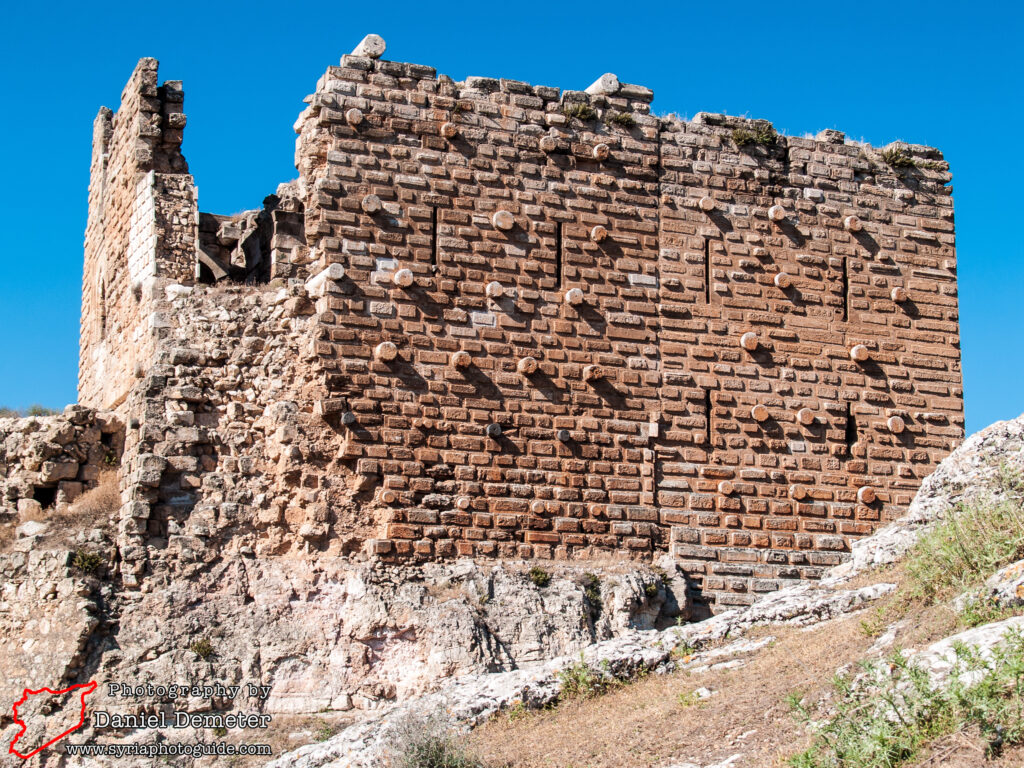
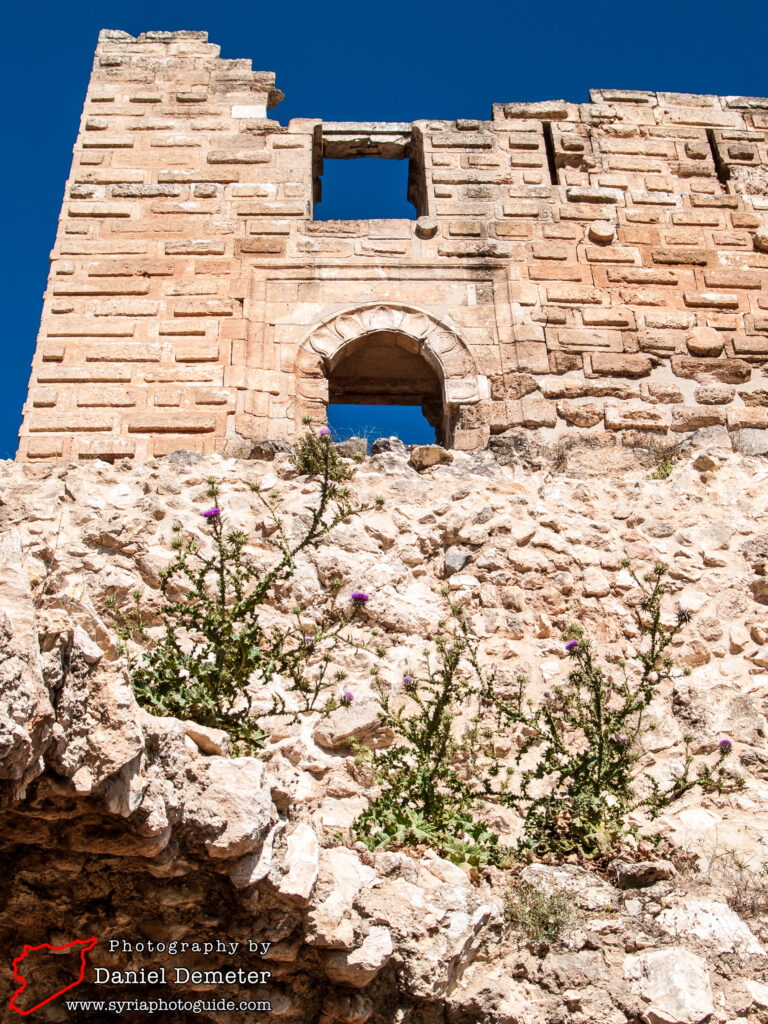
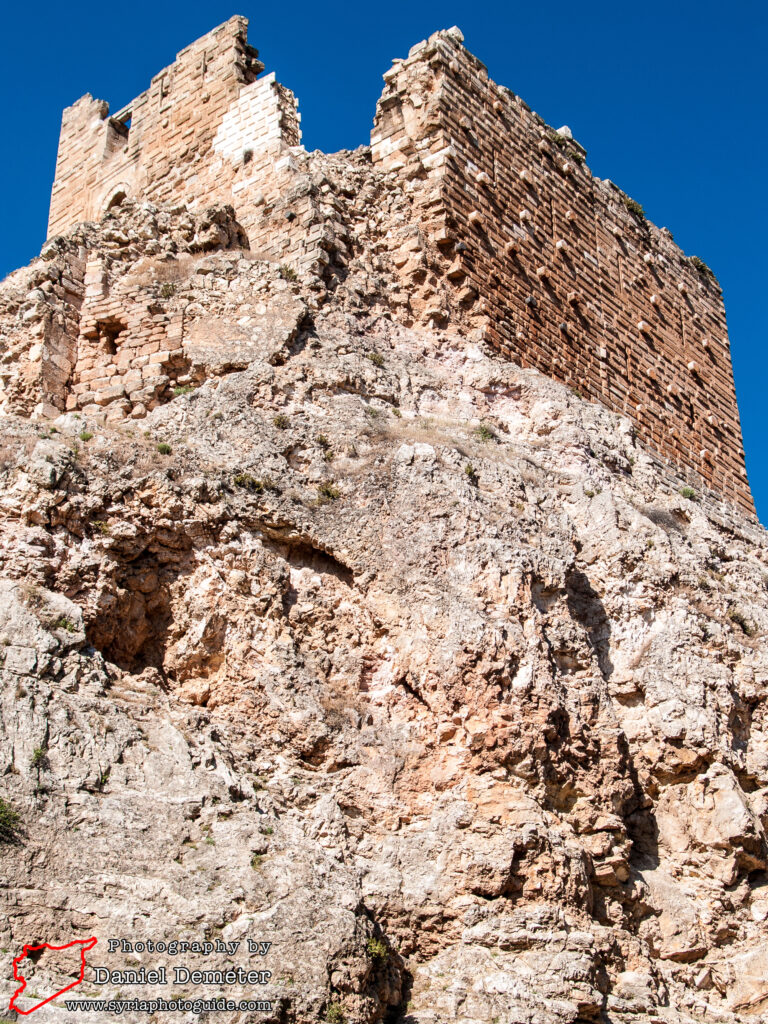
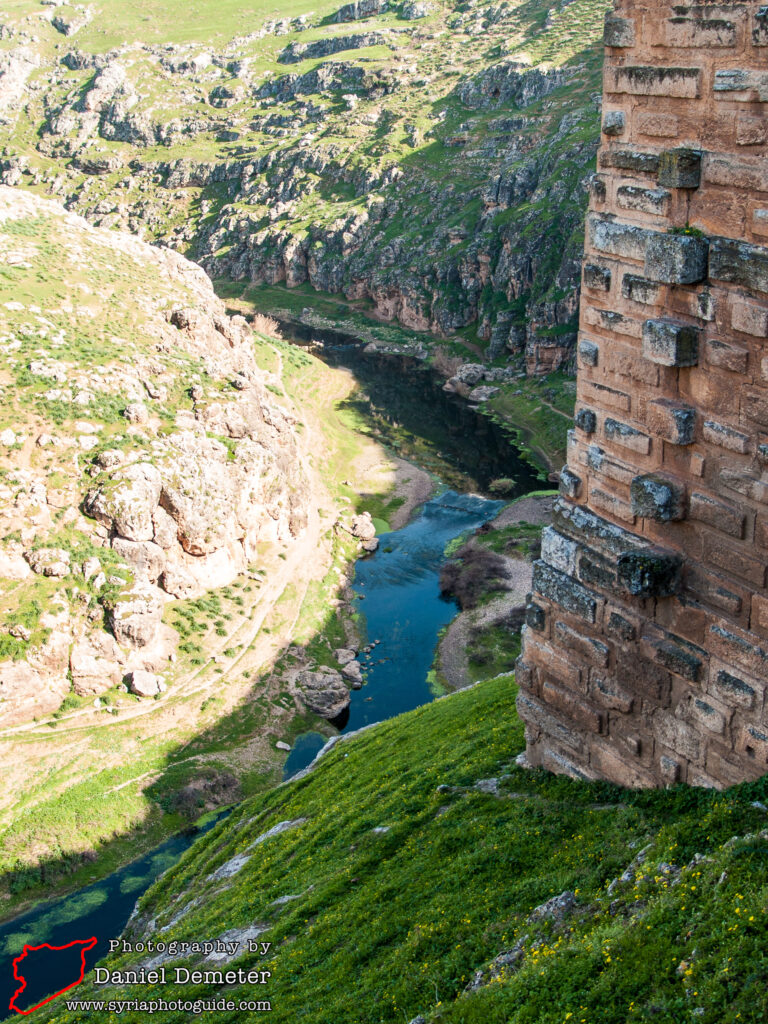
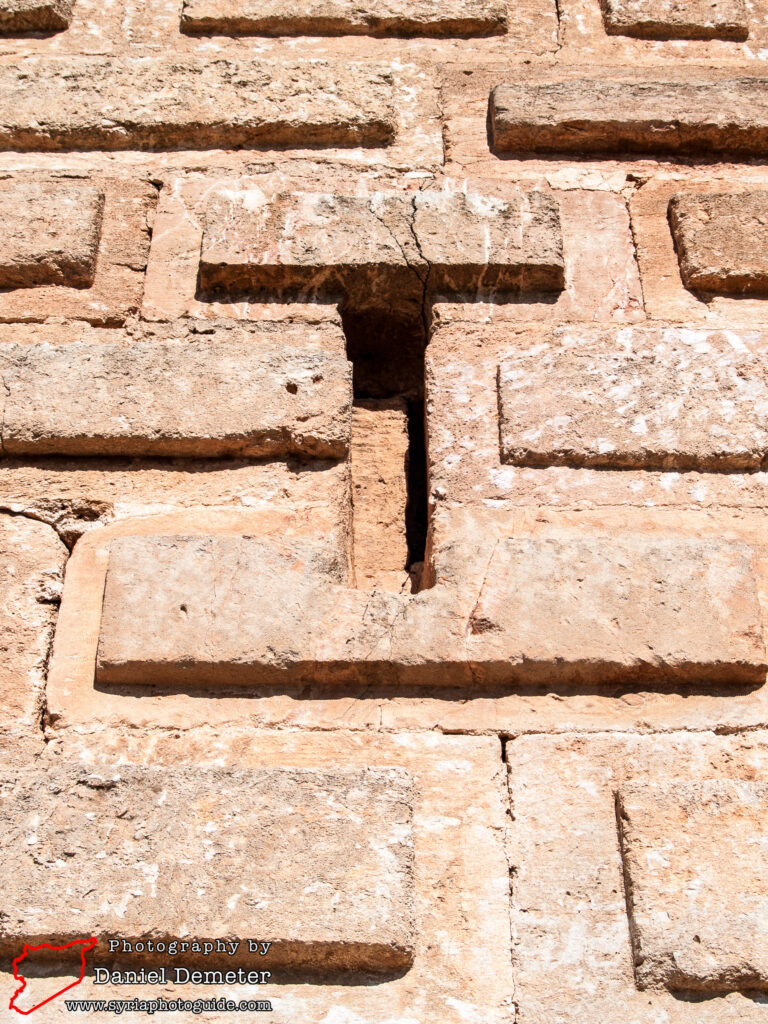
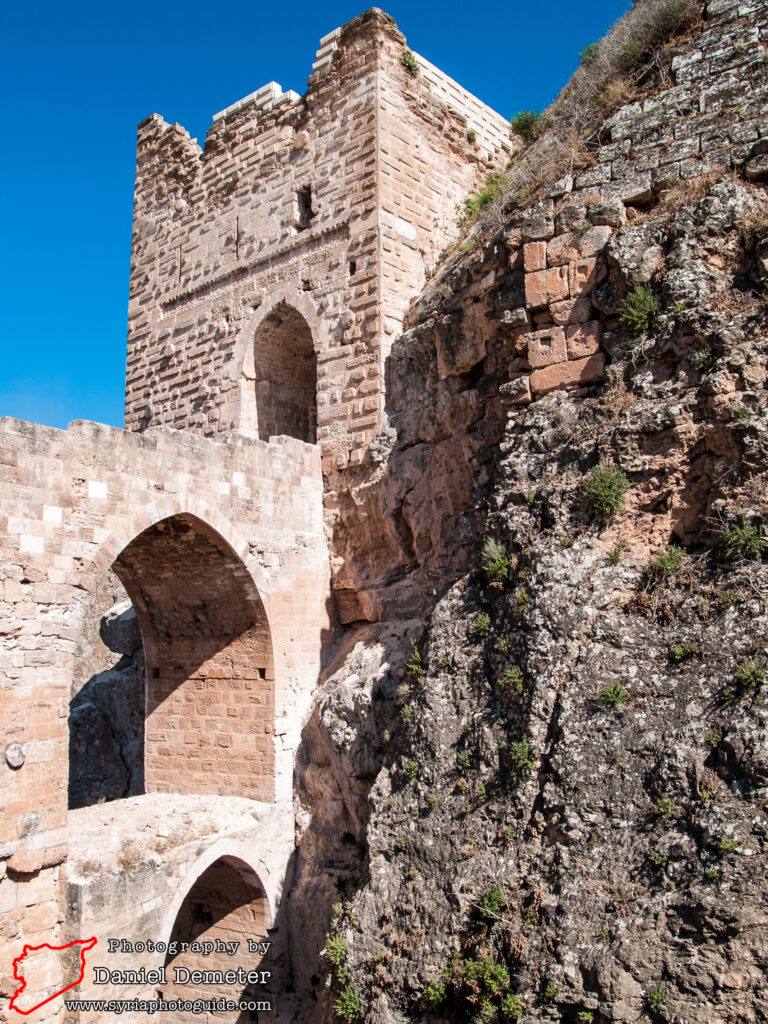
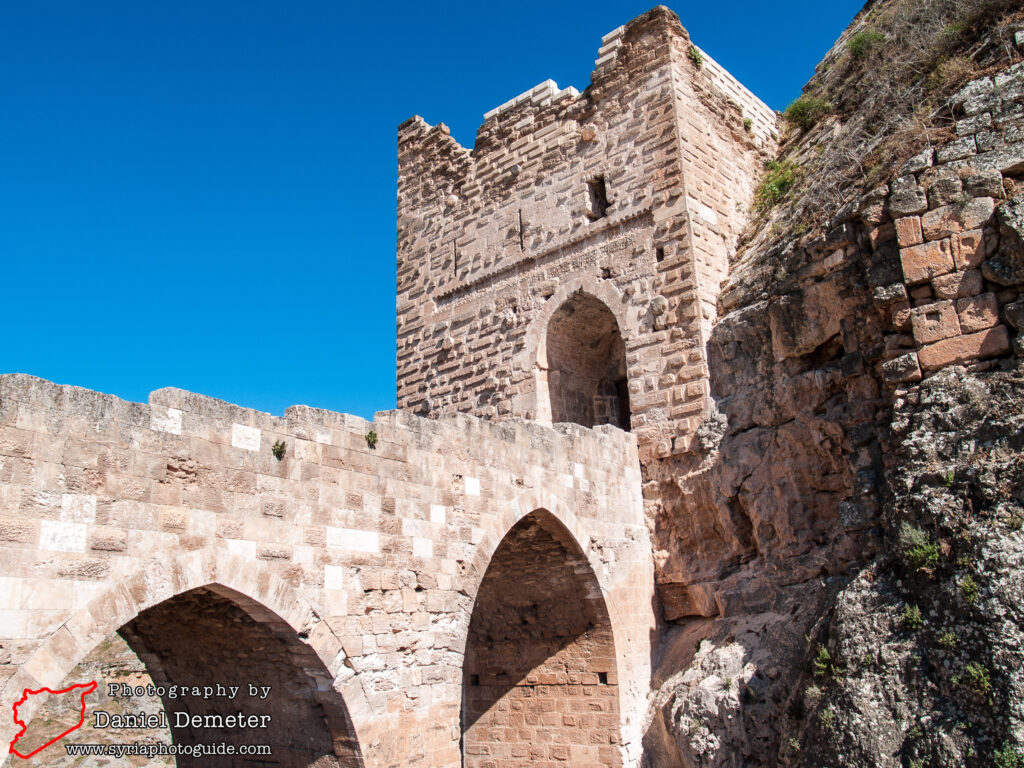
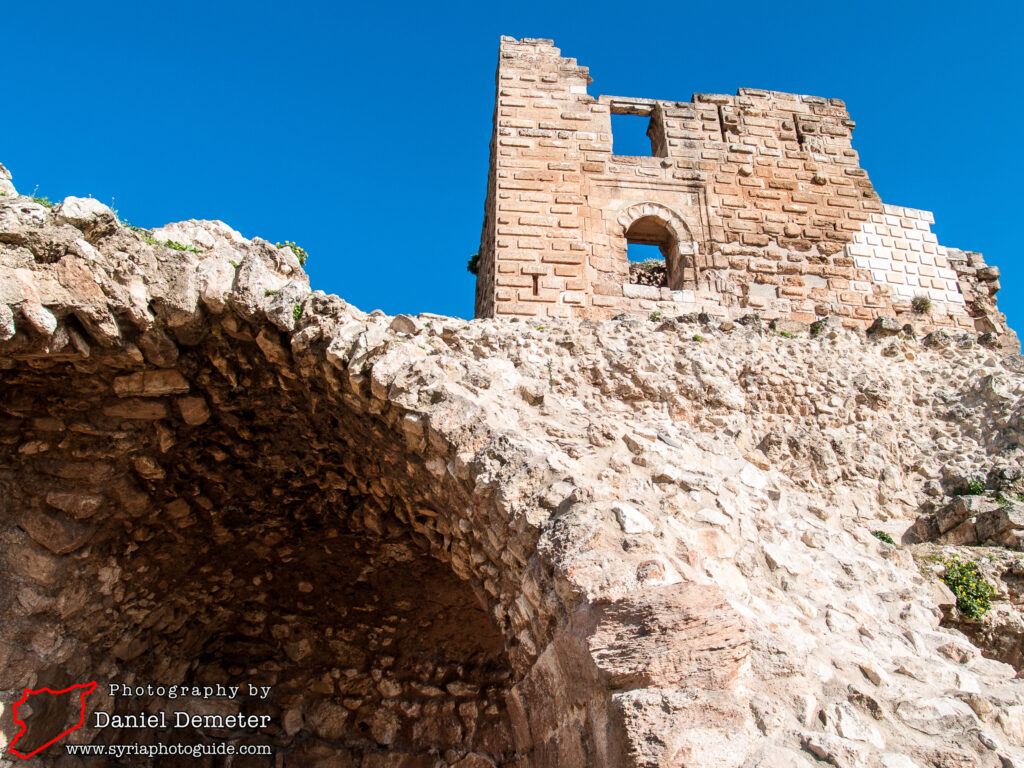
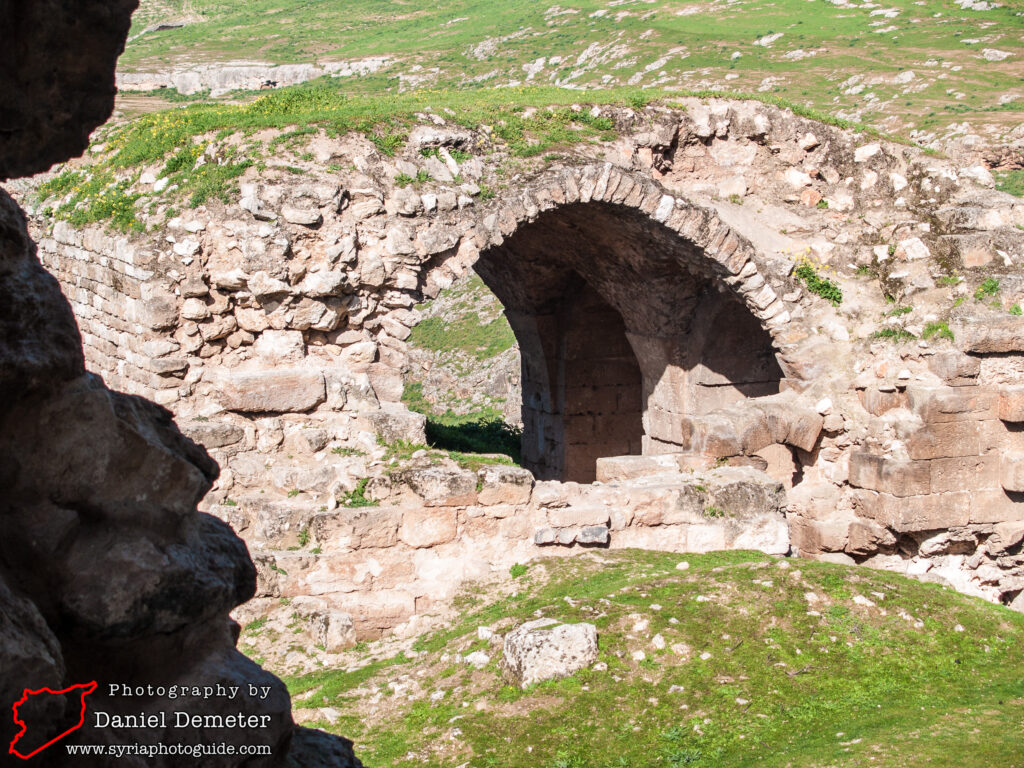
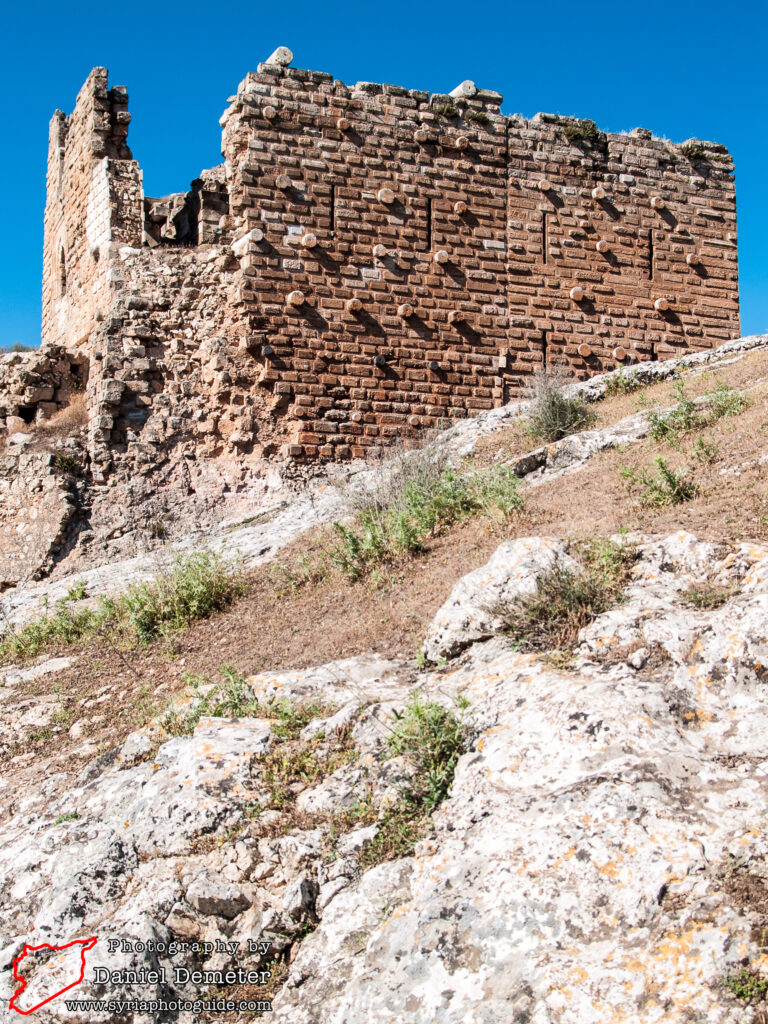
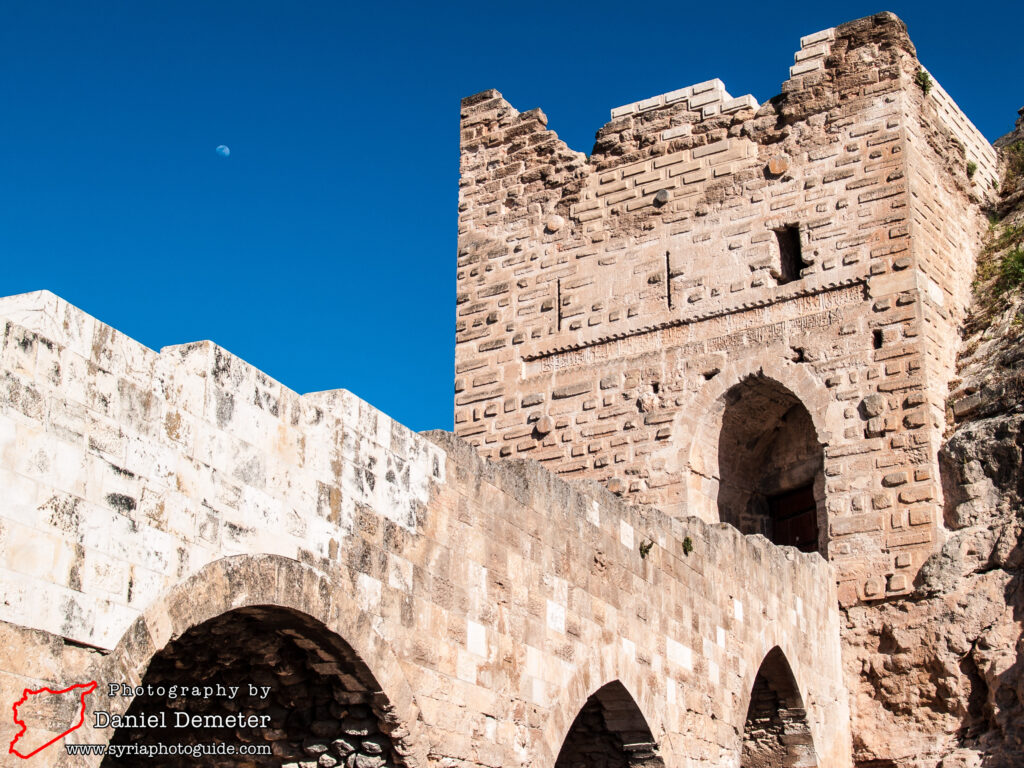
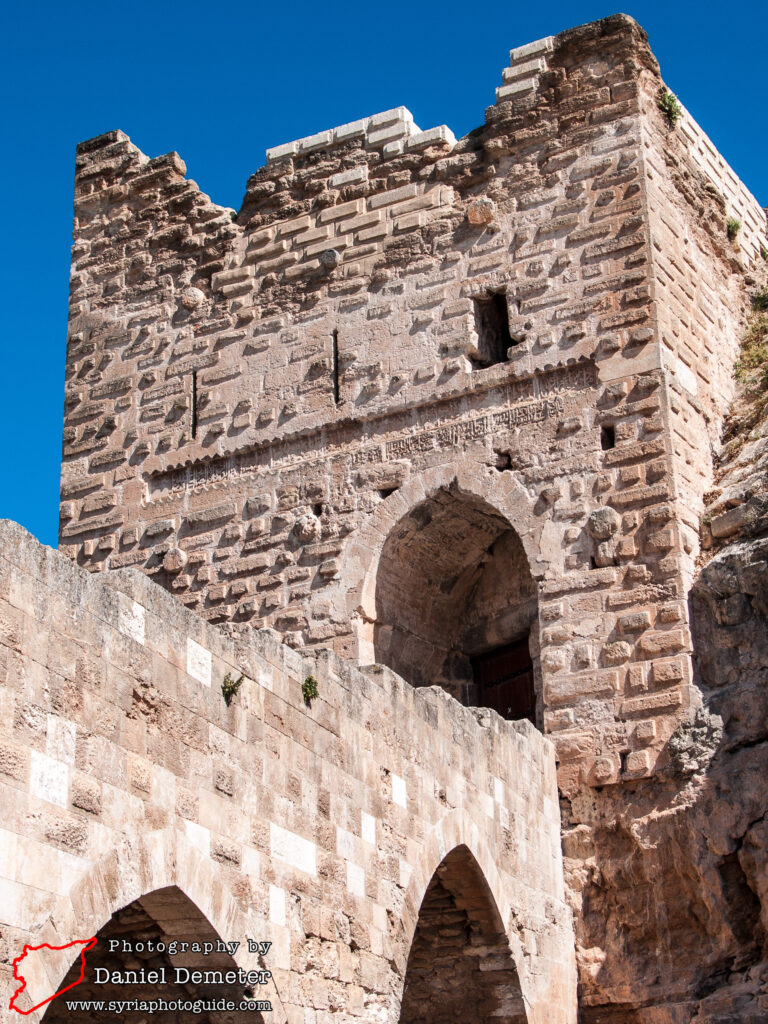
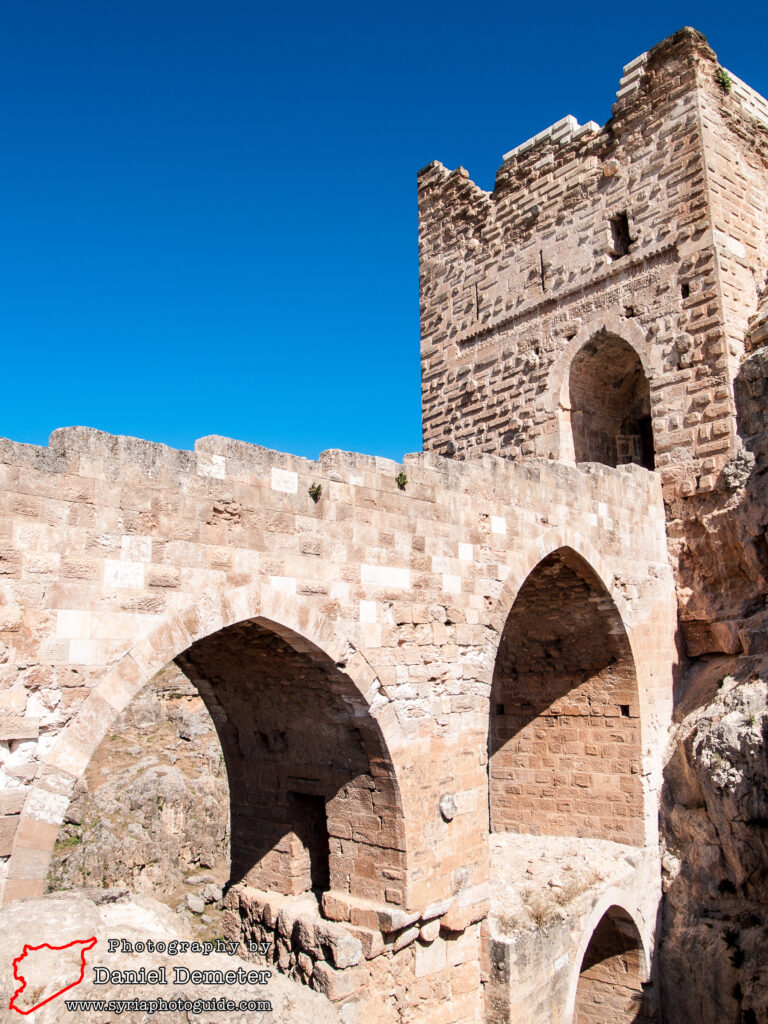
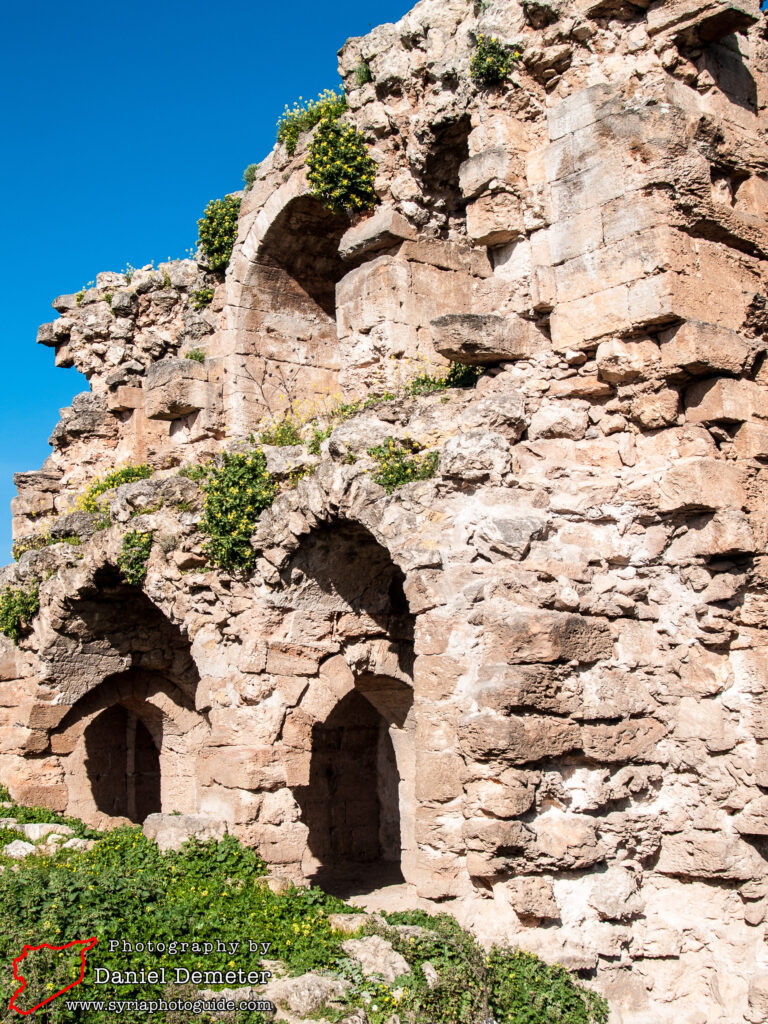
Getting There: Fairly frequent microbuses travel between Hama (حماة) and al-Suqeilbiyeh (الصفيلبية). These microbuses pass by Qalaat Sheizar (قلعة شيزر), which is visible on the right side of the road just a couple of kilometers beyond the town of Mahardeh (محردة). The trip takes about 30 minutes from Hama (حماة). Consider combining a visit to Qalaat Sheizar (قلعة شيزر) with Apamea/Afamia (آفاميا).
Coordinates: 35°15’55.64″N / 36°33’58.58″E
Transliteration Variants: Qalaat Shaizar
Rating: 6.5 / 10
